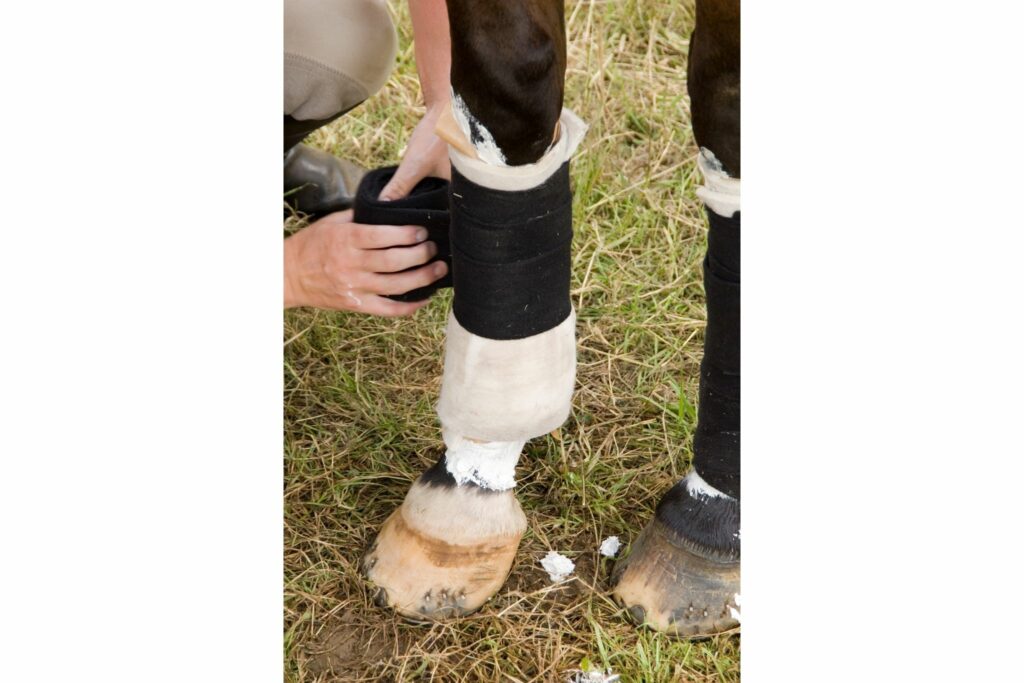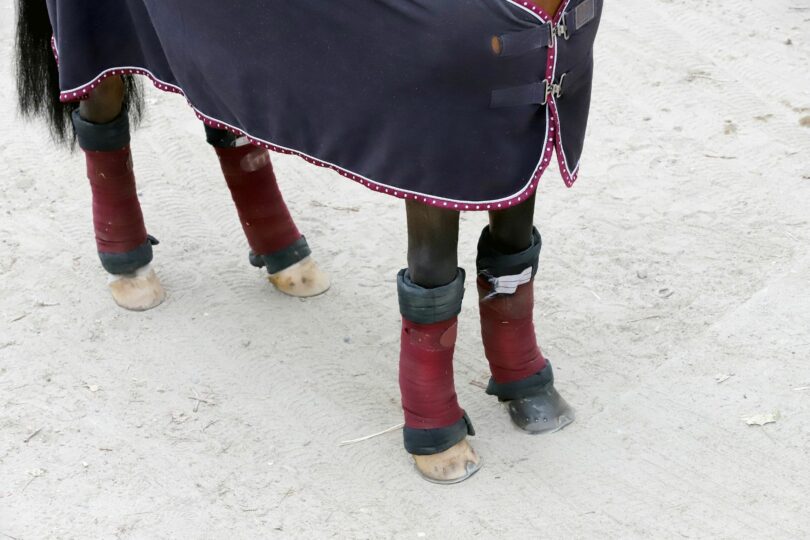Which option is best for my horse? It depends.
There is no doubt that our horses are precious cargo. When traveling with them to a show or clinic, it is crucial to make sure the trip is as stress-free as possible. I wish there was a way to wrap our horses in bubble wrap, but the next best thing is to protect their legs with a leg wrap.
Understanding the difference between shipping boots and standing wraps can help you decide which option is best for you and your horse. It is important to understand the pros and cons of these equine shipping essentials.
Leg Wrap Basics
Shipping boots are only used for trailering (aka shipping) horses. Standing wraps, on the other hand, are more multi-use. From adding extra compression after strenuous exercise to protecting legs during shipping, they serve a variety of purposes.
Regardless of which option you choose, it is generally advisable to have some form of leg protection on your horse when trailering.
Polo wraps are not recommended for shipping as they do not provide as much coverage or protection.
Shipping Boot Basics
Shipping boots have a soft padded interior with a strong (often waterproof) exterior. They start at the knee or hock and go all the way down to the hoof. They are ergonomically designed to fit either the front and hind legs and are not interchangeable.
 Shipping Boot Pros:
Shipping Boot Pros:
- Easy on/off as most have velcro attachmentsDesign protects the entire lower leg, including the hoof area
- Some boots offer extra reinforcement for overreaching
- Come in a variety of colors
- Washable (and often waterproof!)
Shipping Boot Cons:
- Can only be used for shipping
- If not applied correctly, they can come loose and bunch down
Shipping boots come in a variety of price points. If you are looking for an economical option, I’d recommend the Tough1 shipping boots. This set of four costs around $50. Other reputable brands include Professional’s Choice, Amigo, and Rambo.

Photo Cred: Canva
Standing Wrap Basics
You will find standing wraps in the arena, in horse stalls, as well as in the trailer! These multi-use wraps are composed of two elements—the pillowy soft quilted wrap (bottom layer) and a thin polyester over-wrap (also called a standing bandage).
 Standing Wrap Pros:
Standing Wrap Pros:
- Quilted Wraps have regular, No-Bow and Cooling options
- Great for covering liniments and poultices in addition to leg protection
- The standing wraps come in a variety of colors
- Machine washable
Standing Wrap Cons:
- If applied incorrectly, they can cause a bowed tendon
- If applied too loosely, they can come undone and tangle or rip
- This option takes more time and skill to apply correctly
Much like shipping boots, the quilt wrap with standing bandage combo comes in various price points. The Back on Track No-Bows are my go-to for standing wraps, and they even have a cooling option if you are worried about your horse’s leg getting too hot.
Parting Thoughts
When preparing for your next big adventure with your horse, you need to factor in what kind of leg protection you will use on the trailer. Whether you choose shipping boots or standing wraps, it is important to know how to apply them properly to ensure safe travels and happy horses!
P.S. Enjoy this article? Trot on over to:
- 4
Dressage Fashion Trends & Salute-Worthy Styles - 5 Comfy Tall Riding Boots That Look as Good as They Feel
- 3 Best
Dressage Boots for the Perfect Leg Position - 10 Best Brands of No-Regrets Breeches
- Fashion Dos and Don’ts for Horse Show Spectators









